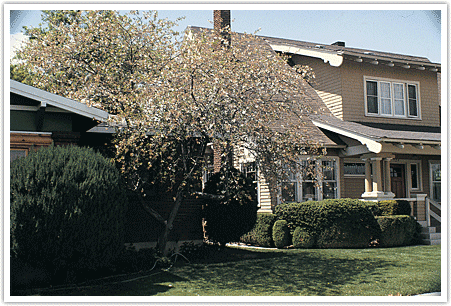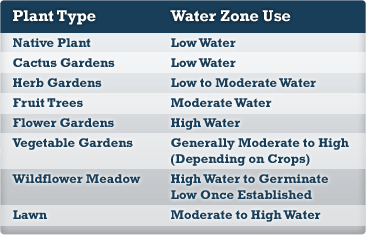Landscape Design and Proper Planning: Getting Started
 Return to Landscape Guide Main Page
Return to Landscape Guide Main Page
1. Develop a plot plan map of your lot. Locate all the features that affect your landscaping. If you're renovating an established yard, evaluate existing plants, patios, decks, fences, walkways, irrigation systems and such features that may need reconfiguration or replacement.
Landscape Design Worksheets
Plan your yard layout quickly and easily with this printable template. Download the PDF template.
2. Place your templates on your plot plan. Draw or cut circles (see our Yard Layout templates) that represent the mature size of plants when designing your new planting areas. Keep in mind that most large canopy-style trees average 40 feet wide; medium trees, 30 feet wide; and small trees, 20 feet wide. Use five- and 10-foot-wide circles to represent shrubs. Perennials are usually one-to three-feet wide.
Hint: Plant deciduous trees (leaves not needles) on the south and/or the west side of your house. This will enhance summer cooling and allow winter sun to warm your home. Choose trees that frame your home, rather than hide it.
3. Create practical lawn areas. Because they use the most water, limit lawns to areas where they are truly needed. If you have plants that would benefit from overspray, place them next to the lawn. Planting turf on slopes is not recommended due to water runoff.
Hint: The easiest lawn to maintain has no trees in it or "islands" of plants, because they impede sprinkler patterns. Avoid areas that require a unique sprinkler pattern. Instead, try a flower bed, a shade tree, or enlarging an adjacent deck or patio.
4. Create a lawn buffer zone to save money and decrease runoff. Often, when watering lawn, there is overspray and runoff, usually onto a driveway or sidewalk. As the water flows off the pavement, it picks up pollutants such as fertilizer, pet wastes and dripped motor oil. The water then travels to the storm drain and gets deposited into the closest body of water without any treatment, therefore polluting our source water. Read More
5. Trees can be placed next to turf areas, but don't typically work within turf itself. Nearly all trees have different watering requirements than turf, which may result in pests, disease and roots surfacing in the lawn. Since trees require twice as much water as turf, they aren't efficiently watered using sprinklers. Instead, use a drip system.
6. Group plants by light requirements. This guide's plant search has broken the daily light requirements into three terms:
7. Group plants by water use zones. A water-efficient landscape will have few "high water use" plants and practical turf area. This chart categorizes plant types based on their water use.

8. Add flowers to your plan last after you've added everything else. Flowers can brighten, soften, highlight or disguise elements of your home's landscape, adding another dimension to the foundation you've created with trees and shrubs.
9. Retain access to metering facilities. When planning your landscape please be aware that access to metering facilities is required for emergencies and routine maintenance. Occasionally, utility employees find it necessary to alter landscaping within the utility easement to gain access to the water meter box, but this can be avoided with thoughtful landscape planning. It is the responsibility of the homeowner to keep a three-foot clearance around the meter box and ensure it is clear of debris.
10. Locate underground utilities. Call before you dig at 1-800-227-2600.



